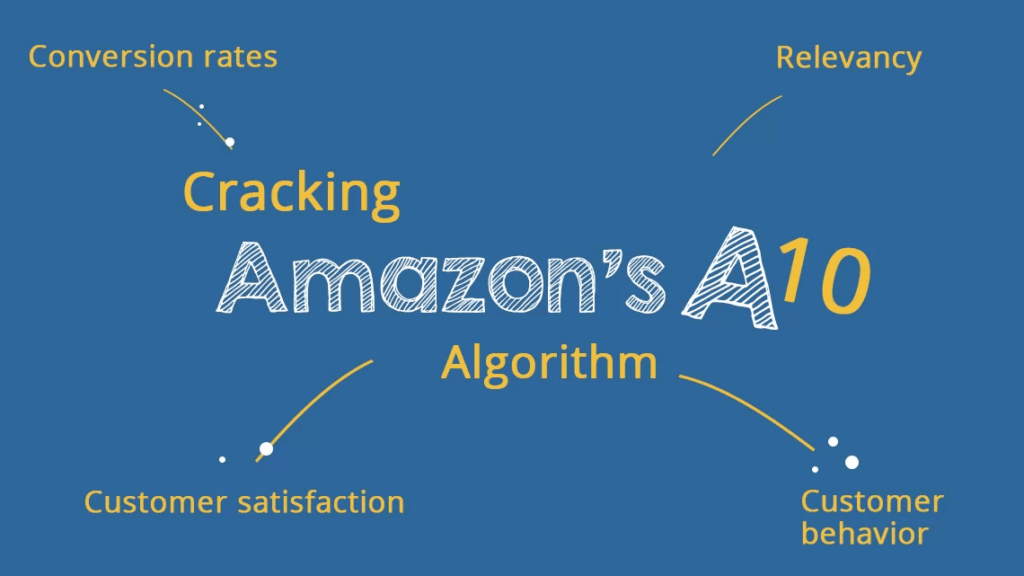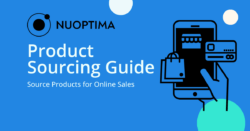Introduction
For eCommerce, Amazon is the giant of online marketplaces, offering a platform for sellers to reach a global audience. However, the vastness of this marketplace also brings with it a high level of competition. For merchants, keyword research is one of the most crucial elements that can make or break their sales performance. This practice involves identifying specific terms or phrases that potential buyers will likely use when searching for products. By incorporating these phrases into product listings, traders can significantly enhance the visibility of their offerings, thereby increasing the likelihood of sales.
Amazon utilises a proprietary algorithm known as A10 to determine the ranking of products in search results. Unlike its predecessor, the A9 algorithm, A10 places a greater emphasis on various factors such as customer behaviour, relevance, and product listing completeness. While the exact workings of the A10 algorithm remain confidential, it is widely acknowledged that terms play a pivotal role in its ranking mechanism.

The algorithm scrutinises the frequency and placement of phrases within a product listing, including the title, bullet points, and product description. Moreover, it considers customer interactions with the listing, such as click-through rates and conversion rates, which are indirectly influenced by effective term usage. Therefore, understanding and leveraging the A10 algorithm is essential for sellers aiming to optimise their product listings for better visibility.
In this article, we will learn about the intricacies of keyword research, explore the elements to look for in a tool, discuss strategies for implementing phrases effectively, and examine the challenges that merchants often face. We will also share insights from successful case studies and provide additional resources for further learning.
Why Use an Amazon Keyword Tool?
The competitive nature of Amazon’s eCommerce platform necessitates using specialised tools for traders who aim to maximise their reach and sales. One such indispensable tool is an Amazon keyword generator. This table explains the many advantages of using such resources, focusing on the primary aspects.
| Advantage | Description |
| 1. Improved Search Visibility | Amazon tools help you identify relevant search terms for your products, increasing the likelihood of your listings appearing in relevant search results and leading to higher visibility among potential customers. |
| 2. Enhanced Product Ranking | By optimising your product listings with high-performing phases, you can improve your product’s ranking on search results pages, potentially leading to more organic sales and increased revenue. |
| 3. Competitive Analysis | Many tools provide insights into your competitors’ keyword strategies, allowing you to identify gaps and opportunities in the market, helping you stay ahead of the competition. |
| 4. Cost-Effective Advertising | Using relevant words in ads can reduce ad spend wastage, ensuring that your advertisements are shown to users actively searching for products like yours, potentially lowering your advertising costs. |
| 5. Targeted Product Listings | Research tools help you create more precise and relevant product listings, attracting genuinely interested customers and leading to higher conversion rates and customer satisfaction. |
| 6. Data-Driven Decision Making | These tools provide valuable data and insights, helping you make informed decisions about which terms to target, what products to prioritise, and how to allocate your marketing resources effectively. |
| 7. Expansion to New Markets | These platforms can assist in identifying terms relevant to different regions or languages, allowing you to expand your market reach and tap into new customer segments both nationally and internationally. |
| 8. Real-time Monitoring | Some tools offer up-to-date performance tracking, enabling you to adapt your strategy quickly and respond to market changes, ensuring that your products remain competitive. |
Key Features to Look For in Amazon Tools
Selecting the best tool is a critical decision that can significantly impact a seller’s performance on this eCommerce platform. With numerous options available, it becomes essential to understand the features that can genuinely add value to your analysis efforts. This section will discuss three essential elements to consider: real-time keyword data and search volume, reverse Amazon Standard Identification Number (ASIN) lookup for competitor analysis, and multilingual suggestions.
1. Real-Time Keyword Data and Search Volume
In a dynamic environment such as Amazon, where consumer preferences and search behaviours are continually changing, having access to real-time data is crucial. A tool that provides up-to-date information allows merchants to make timely decisions, adapting their product listings to current trends. Additionally, understanding the volume associated with specific terms can help sellers gauge the potential reach of their products. A high search volume indicates a larger audience but may also signify increased competition. Therefore, current data can serve as a valuable guide for balancing reach and competitiveness.
2. Reverse ASIN Lookup for Competitor Analysis
Another feature that can offer a competitive advantage is the reverse ASIN lookup. This function enables traders to analyse the phrases used in competitors’ product listings by inputting their ASIN. By doing so, merchants can gain insights into which phrases contribute to competing products’ success. This information can be invaluable for refining your own strategy, allowing for more targeted and effective product listings.
3. Multilingual Keyword Suggestions
As the platform operates in multiple countries and languages, the ability to conduct research in various languages can be a significant asset. A software that offers multilingual suggestions can help sellers target a broader, more diverse customer base. This feature is particularly beneficial for those who sell in multiple Amazon marketplaces, as it allows for the optimisation of product listings across different linguistic landscapes.
Comparison of Top Amazon Keyword Tools
Selecting the right tool is crucial for vendors who wish to excel on this expansive platform. Below is a table that compares the main features of some of the top keyword generators to assist sellers in making an informed decision.
| Tool Name | Key Features | Pricing Range | Free Trial |
| Google Keyword Planner | Average monthly searches, level of competition, top-of-page bid | Free | N/A |
| Amazon Keyword Tool | Volume, trend, CPC, competition | $89-$199/month | No |
| Ahrefs | Database of 7 billion+ keywords, advanced metrics | $99-$999/month | 7 days |
| SellerApp | Volume, CPC, estimated orders | $89-$149/month | Yes |
| Keyword Inspector | Reverse ASIN searches, country-specific databases | $39.95-$59.95 | 3 days |
| AMZ One | Rank tracking, simple ranks to sophisticated rank tracking | $20-$180/month | Limited free trial |
| Jungle Scout | Precise and broad volumes, reverse ASIN search | $39-$129/month | 14-day money-back |
| Helium 10 | Amazon recommended, top products, word frequency | $97-$397/month | Limited free features |
| Merchant Words | Long-tail keyword suggestions, expanded to include almost every Amazon marketplace | $29-$149/month | 14-day money-back |
| Sonar | Main search returns keywords and related phrases, volume indicators | Free | N/A |
| WordTree | Keywords your product does and doesn’t index for | Free + $20 reports | N/A |
How Amazon Keyword Tools Work
Understanding the mechanics of keyword generators can offer valuable insights into their efficacy and relevance in the competitive world of online selling. Here are the three main components that contribute to the functionality of these tools:
1. Database of Amazon Product-Keyword Combinations
At the heart of any keyword tool lies a comprehensive database that collates an array of product-phrase combinations. This database serves as the foundational layer upon which search term suggestions are built. It aggregates information from various sources, including Amazon’s own search engine, to provide a list of words that are most relevant to a given product. The database is continually updated to reflect changes in consumer behaviour, ensuring that the suggestions remain relevant over time.
2. Importance of Real Amazon Shopper Data
While generic data can offer some insights, the real value lies in data sourced directly from Amazon shoppers. This is because the platform has algorithms and user behaviours that may not align with general internet search patterns. Real shopper data provides a more accurate representation of what potential buyers are actually looking for on the marketplace. This, in turn, allows merchants to optimise their product listings in a way that resonates with the specific habits of users.
3. Predictive Algorithms for Search Volume
Another noteworthy feature of keyword tools is the use of predictive algorithms to estimate volume for various terms. These algorithms analyse historical data and current trends to forecast the potential volume for a given phrase. While not an exact science, these predictive models offer a reasonable approximation that can be invaluable for traders when deciding which ones to target. The algorithms take into account seasonal variations and other factors that could influence volume, providing a more nuanced understanding of effectiveness.
Optimising Your Amazon Listing With Keywords

The process of optimising a listing involves more than just selecting the right terms; it’s about strategically placing them in various sections of your product listing to maximise visibility and conversion. This section will delve into the essential areas where keywords should be incorporated, the importance of balancing density with compelling content, and the role of A+ content in enhancing your product listing.
Importance of Title, Description, Bullet Points, and Backend Keywords
Here are four critical areas where keywords should be thoughtfully incorporated:
- Title: The title is often the first element that potential buyers see in results. It should be descriptive yet concise, incorporating primary phrases that are most relevant to the product.
- Description: This is where you can provide a more detailed explanation of the product features. Terms should be naturally integrated into the text to maintain readability while boosting SEO.
- Bullet Points: These are quick, digestible pieces of information that highlight the product’s features and benefits. Incorporate secondary keywords here to complement those used in the title and description.
- Backend Keywords: These are phrases that are not visible to shoppers but are indexed by Amazon’s algorithm. Use this space for synonyms, abbreviations, and other relevant terms that you haven’t included elsewhere.
Balancing Keyword-Rich and Compelling Content
While it’s essential to include relevant keywords, the content should also be engaging and informative to encourage conversions. Overstuffing a listing can make it difficult to read and may deter potential buyers. The key is to maintain a balance between SEO and user experience, ensuring that the content not only ranks well but also resonates with the target audience.
A+ Content and Its Role in Enhancing Product Listings
This type of content allows sellers to include additional information in images, comparison charts, and more. This enriched content can be valuable for incorporating long-tail keywords and providing a more comprehensive understanding of the product. Moreover, A+ content can improve the overall aesthetic of your product listing, making it more appealing to potential buyers.
Amazon PPC and Keywords
PPC advertising on the marketplace is a great option for merchants aiming to increase their product’s visibility and sales. However, the success of an ad campaign is largely dependent on the effective use of keywords. This section will elucidate the distinction between organic and paid terms, delve into the significance of different match types, and discuss the importance of monitoring and adjusting ads based on organic rankings.
The Difference Between Organic and Paid Keywords
The following table is a comprehensive guide to understanding the main differences between organic and paid keywords. By comparing these features, you can make more informed decisions on how to allocate resources for long-term SEO efforts and immediate PPC campaigns.
| Feature | Organic Keywords | Paid Keywords |
| Cost | Free | CPC |
| Visibility | Long-term, dependent on SEO factors | Immediate, dependent on bid amount |
| Search Result Placement | Natural search results | Sponsored listings |
| Influence Factors | Title, description, customer behaviour | Bid amount, quality score |
| Relevance | Determined by Amazon’s algorithm | Determined by bid and quality score |
| Control | Limited, based on SEO efforts | High, can be adjusted in real-time |
| Keyword Source | Natural search queries | Selected and bid on by sellers |
| Performance Metrics | Organic rankings, CTR | CTR, conversion rate |
| Time to See Results | Can take weeks to months | Can be immediate |
| Geographic Targeting | Limited | Can be specified |
| Seasonal Trends | May be affected | Can be adjusted for |
Importance of Keyword Match Types
For advertising, the choice of keyword match type can significantly impact the campaign’s effectiveness and return on investment. Below are the four primary match types to help you better understand their unique characteristics and applications in the campaigns.
- Broad Match: This type allows your ad to show when someone looks for that term or any variation of it. It offers the most extensive reach but may include irrelevant clicks.
- Exact Match: As the name suggests, the ad will only show if someone types the same phrase. It is the most restrictive but ensures high relevance.
- Phrase Match: Your ad will appear if the term contains the exact phrase of the keyword. It offers a balance between reach and relevance.
- ASINs: The ASINs can also be targeted in ads. This allows traders to show their products on other product pages, potentially capturing some of that page’s traffic.
Monitoring and Adjusting PPC Campaigns
The effectiveness of an ad campaign on the platform is not a set-it-and-forget-it affair; it requires continuous monitoring and adjustments to ensure optimal performance. One of the key aspects that merchants should focus on is the interplay between organic rankings and paid ads. This section elaborates on the steps involved in monitoring and adjusting campaigns, taking into account the organic rankings of the targeted keywords.
Initial Assessment
Before even launching a campaign, it’s crucial to have a clear understanding of where your product currently stands in terms of organic rankings for the targeted words. This initial assessment serves as a baseline that allows you to measure the impact of your paid advertising efforts. Tools like Amazon’s own analytics or third-party software can provide insights into organic rankings, helping you identify which terms could benefit most from paid advertising.
Ongoing Monitoring
Once the campaign is live, ongoing monitoring becomes essential. Regularly checking the organic rankings of your targeted phrases can offer valuable insights into the effectiveness of your campaign. For instance, some keywords may perform exceptionally well in organic search but not yield the same results in a paid setting. Conversely, some who are not strong performers organically could excel in a PPC campaign. Understanding these dynamics allows more informed decision-making when managing your ad budget and strategy.
Adjustments
Your campaign may need some adjustments based on the performance metrics gathered during the ongoing monitoring phase. These adjustments are not merely reactive but should be strategic, aimed at enhancing the campaign’s overall performance. For example, suppose certain terms are underperforming in terms of CTR or conversion. In that case, it might be prudent to pause them and reallocate the budget to keywords generating a better return on investment. Similarly, suppose organic rankings improve for specific phrases. In that case, you might reduce the ad spend on those terms, achieving a more cost-effective balance between organic and paid search visibility.
Common Challenges and Solutions in Keyword Research
Navigating the complexities of keyword research can often involve overcoming a variety of challenges that can impact a seller’s success. This table outlines the most common challenges encountered in testing and provides actionable solutions to help sellers optimise their product listings effectively.
| Common Challenges | Solutions |
| Uncertainty of Product Ideas | Comprehensive market research, including customer reviews and competitor analysis |
| Estimating Profitability | Use metrics like CPC and conversion rate to assess potential profitability |
| High Competition | Target long-tail keywords or specific niches to reduce competition |
| Seasonal Variations | Monitor trends and adjust strategy seasonally |
| Inconsistent Organic Rankings | Regularly update listings and backend keywords based on performance metrics |
How NUOPTIMA Can Help
The journey to becoming a top seller requires a lot of skill and experience. Even with subscriptions to the best tools, it can be a struggle to generate sales and stand out from competitors. There are specialist Amazon growth agencies that can help you achieve your eCommerce goals and support you with the intricacies of selling on this giant marketplace.
Our own agency, NUOPTIMA, offers a range of services aimed at simplifying the complex process of Amazon keyword research. Our expertise includes market analysis, keyword selection, and PPC campaign management, among other core services. By leveraging our knowledge and tools, you can navigate the challenges of research more effectively, thereby increasing your chances of success on the marketplace. Book your free growth consultation today.
Top Sellers and Their Keyword Strategies
As you now understand, one of the most crucial elements of becoming a top seller is having an effective strategy. Here are some of the ways NUOPTIMA clients have achieved success on Amazon with the help of our expert team.
1. Ola Bamboo Case Study

Background: Ola Bamboo is a Canadian brand that sells plastic-free home and lifestyle products. They initially focused on direct-to-consumer sales through Facebook ads but decided to diversify their revenue streams by entering the marketplace in 2019.
Keyword Strategy: NUOPTIMA helped Ola Bamboo in listing optimisation by focusing on product titles, bullet points, and product descriptions. We targeted high-volume terms like ‘reusable utensils bamboo’ and managed to rank on the first page for this keyword.
Results: Our experts managed the entire process for Ola Bamboo, from account setup to PPC management. We also focused on listing health, which scored 9.88/10 and helped the brand rank for 351 keywords. Learn more about the Ola Bamboo case study here.
Takeaways:
- Importance of diversifying revenue streams.
- Effective listing optimisation can lead to high rankings for targeted phrases.
- Consultation with experts like NUOPTIMA can guide in understanding the platform’s complex system.
2. Hydration Belt Client (NDA) Case Study

Background: Our hydration belt client focuses on providing hydration solutions for active individuals. The brand was new to Amazon and aimed to increase its sales without affecting its ACoS. They approached NUOPTIMA with a specific goal: to boost sales while maintaining or reducing spending.
Keyword Strategy: Our initial assessment revealed that the original ad team had targeted incorrect phrases, leading to a low conversion rate. NUOPTIMA took a two-phased approach. The first phase involved cleaning up the ad campaigns, and the second phase focused on scaling.
Results: By cleaning up these inefficient keywords, we managed to lower the ACoS from 46% to 27%. Over four months, we were able to safely scale the brand’s ad campaign from $15.8k in sales to $31.7k, exceeding the target ACoS goals. Discover more about their SEO strategy here.
Takeaways:
- Proper targeting can significantly reduce ACoS.
- Cleaning up inefficient terms is crucial before scaling ads.
- A well-managed PPC campaign can double sales while reducing ACoS.
3. Apparel Brand (NDA) Case Study

Background: The apparel brand, whose name is withheld due to an NDA, aimed to scale its daily sales from $500 to $2,000. They partnered with NUOPTIMA to achieve this goal while also aiming to reduce their advertising cost of sale (ACoS).
Keyword Strategy: NUOPTIMA took a comprehensive approach to optimise the brand’s backend terms. We harvested hundreds of winning phrases and product targets to expand the manual targeting mix. Our team also focused on optimising budgets based on varying product objectives and introduced dozens of negative keywords and product targets.
Results: The NUOPTIMA strategy led to the introduction of the client to Sponsored Brands, one of which generated $5,000 in sales at 7x Return on ROAS and a 14% ACoS. Our approach led to a 50% reduction in ACoS and a 4x increase in revenue. Learn more about this amazing Amazon case study here.
Takeaways:
- Backend search term optimisation can significantly improve visibility.
- Sponsored Brands can be a lucrative avenue for additional sales.
- A well-planned strategy can lead to a substantial increase in daily sales while reducing ACoS.
4. Wine Glass Brand (NDA) Case Study

Background: Our wine glass brand client was struggling to surpass $10k in sales and had a high ACoS of 31%. They collaborated with NUOPTIMA to scale their sales and reduce their spend.
Keyword Strategy: NUOPTIMA employed a multi-faceted approach, testing various ad units, including sponsored products, sponsored brands, sponsored displays, sponsored videos, and sponsored voucher coupons. By optimising keyword selections, product targets, and negative terms, we managed to cut the ACoS dramatically.
Results: NUOPTIMA’s strategy led to a 6x increase in sales, from $10k to $60k, while reducing the ACoS from 31% to 19%. This was achieved by optimising keyword selections and introducing various types of sponsored ads. Read more about their marketplace case study here.
Takeaways:
- A multi-channel advertising strategy can be more effective than relying on a single ad type.
- Efficient bidding can lead to a significant reduction in ACoS.
- Strategic use of various sponsored features can result in a substantial increase in sales.
5. This Is Nuts Sweden Case Study

Background: This Is Nuts Sweden was primarily a wholesale business, generating around $1 million per year. They had little to no online presence and aimed to expand their sales channels. They partnered with NUOPTIMA to grow their online sales, specifically targeting the UK and Germany.
Keyword Strategy: NUOPTIMA managed the entire Amazon process for This Is Nuts, from account setup to PPC management. We took a comprehensive approach to establishing their brand on the marketplace, including completing tasks like adding ASINs, uploading content, and gaining category approval.
Results: Within just 6 months, we helped This Is Nuts grow from zero online presence to generating $8k in monthly sales across their two target geographies (UK and Germany). Learn more about This Is Nuts Sweden case study here.
Takeaways:
- Transitioning from a wholesale model to an online sales channel can be effectively managed with expert guidance.
- Comprehensive account management, including PPC, is crucial for brands new to Amazon.
- Geographical expansion within the platform can significantly boost sales.
Conclusion
The role of keyword research for this marketplace cannot be overstated. As the case studies and strategies discussed in this article demonstrate, a well-executed plan can be the linchpin for a brand’s visibility, sales, and overall success on the platform.
Investing in a reliable tool is not just an optional step but a fundamental requirement for sellers aiming to optimise their listings and ad campaigns. These tools offer a range of features, from real-time data to predictive algorithms, that can significantly enhance a seller’s decision-making process.
While technology can provide valuable insights, the complexity of algorithms and the competitive nature of the marketplace often necessitate professional guidance. Services such as those offered by NUOPTIMA can fill this gap effectively. Our expertise in managing Amazon accounts, as evidenced by multiple success stories, can be a valuable asset for traders aiming to navigate the intricacies of keyword exploration and ad campaign management.
FAQ
To generate keywords, identify the core terms describing your product. Expand this list by researching synonyms, related terms, and phrases that potential customers might use. Utilise tools that offer up-to-date data to refine your list based on volume and competition.
A keyword tool is a software application to help sellers find relevant keywords for their product listings and PPC campaigns. These tools often provide current data, including volume and competition levels, to help merchants make informed decisions.
Various tools are available for keyword hunting on Amazon, each with its own set of features. Popular options include Helium 10, Ahrefs, and SellerApp, which offer functionalities like real-time data, reverse ASIN lookup and multilingual suggestions.
The “best” research tools for the marketplace depend on your specific needs and budget. Helium 10 and Ahrefs are often cited for their comprehensive features, while free options like Sonar offer basic functionalities. Consider factors like data accuracy, user interface, and additional features when choosing.
The cost of keyword generators can vary widely, ranging from free to several hundred dollars per month. Free tools often offer limited functionalities, while premium options provide more comprehensive data and features. Some platforms also offer tiered pricing plans to accommodate different levels of usage.



